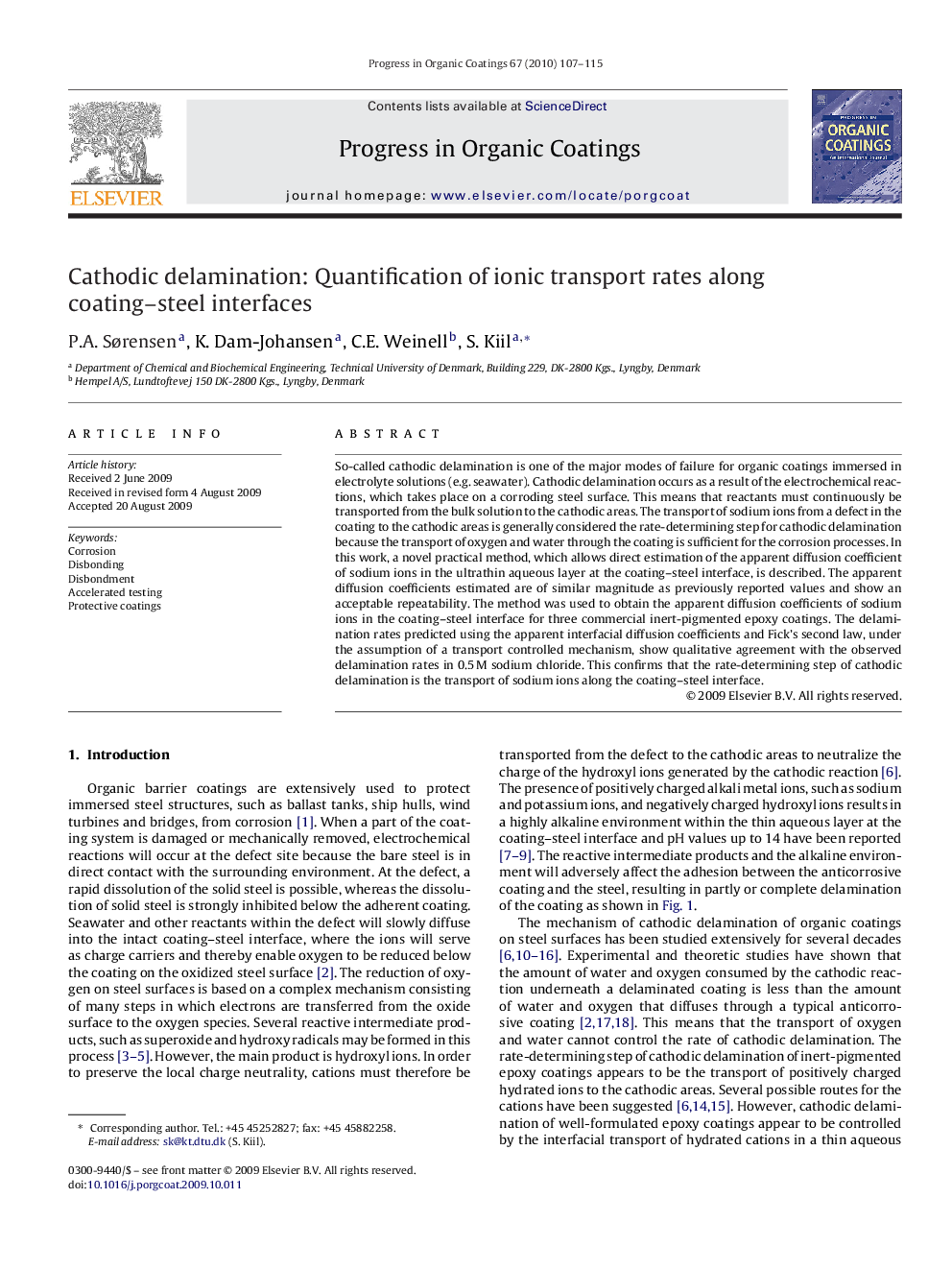| Article ID | Journal | Published Year | Pages | File Type |
|---|---|---|---|---|
| 693296 | Progress in Organic Coatings | 2010 | 9 Pages |
So-called cathodic delamination is one of the major modes of failure for organic coatings immersed in electrolyte solutions (e.g. seawater). Cathodic delamination occurs as a result of the electrochemical reactions, which takes place on a corroding steel surface. This means that reactants must continuously be transported from the bulk solution to the cathodic areas. The transport of sodium ions from a defect in the coating to the cathodic areas is generally considered the rate-determining step for cathodic delamination because the transport of oxygen and water through the coating is sufficient for the corrosion processes. In this work, a novel practical method, which allows direct estimation of the apparent diffusion coefficient of sodium ions in the ultrathin aqueous layer at the coating–steel interface, is described. The apparent diffusion coefficients estimated are of similar magnitude as previously reported values and show an acceptable repeatability. The method was used to obtain the apparent diffusion coefficients of sodium ions in the coating–steel interface for three commercial inert-pigmented epoxy coatings. The delamination rates predicted using the apparent interfacial diffusion coefficients and Fick's second law, under the assumption of a transport controlled mechanism, show qualitative agreement with the observed delamination rates in 0.5 M sodium chloride. This confirms that the rate-determining step of cathodic delamination is the transport of sodium ions along the coating–steel interface.
